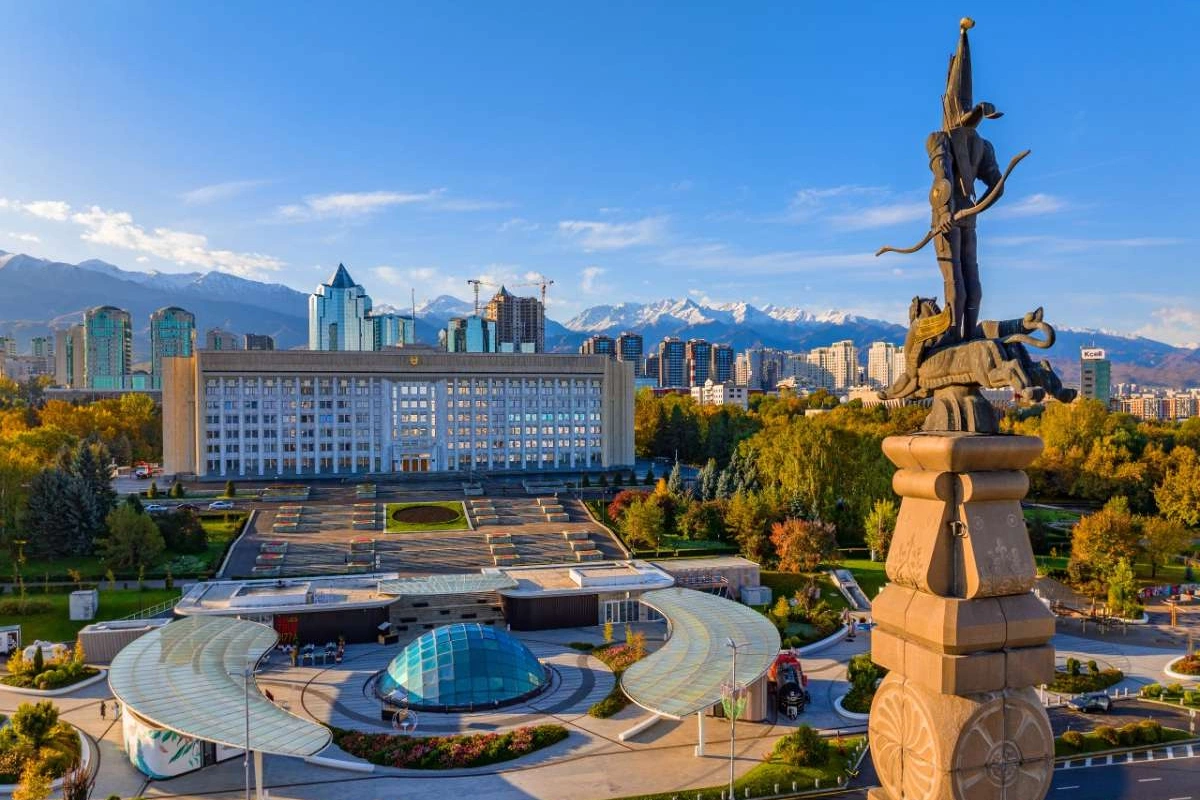
In May 2024, Kazakhstan rose to 52nd place in the Global Tourism Development Index, surpassing countries like Qatar, Vietnam, and Uzbekistan.
Almaty, Kazakhstan, 10.08.2023. Monument to the Independence of Kazakhstan and the Akimat of the city of Alamty on an autumn morning — Photo by MaxZolotukhin.
Kazakhstan, with its breathtaking natural attractions and rich cultural heritage, has long aspired to become a compelling destination for global travelers. In recent years, the country has taken concrete steps to enhance its tourism infrastructure, aiming to elevate its status on the world stage. The planned construction of airports in picturesque regions such as Katon-Karagay, Zaysan, and Kenderli marks a significant milestone in Kazakhstan’s efforts to develop both domestic and international tourism. What impact will this project have, and what prospects does it open for the country?
The establishment of airports in Katon-Karagay National Park, near Lake Zaysan, and in the resort area of Kenderli on the Caspian coast is expected to substantially ease access to these scenic regions. According to the Civil Aviation Committee, these airports will link these destinations with Kazakhstan's two major cities, Astana and Almaty. This strategy is projected not only to increase tourist flow but also to contribute to the economic growth of the regions, creating new jobs, attracting infrastructure investments, and fostering new tourism opportunities.
Kazakhstan is renowned for its diverse natural landmarks, many of which hold unique ecosystems and cultural significance. For instance, Katon-Karagay National Park is recognized as a UNESCO Biosphere Reserve and is the largest nature park in the country. Its pristine mountain landscapes and biodiversity attract countless tourists each year, although its remote location has posed challenges to accessibility. Lake Zaysan, fed by the Irtysh River and encircled by rugged rock formations, offers mesmerizing vistas reminiscent of the world’s finest travel brochures. Meanwhile, Kenderli, located on the Caspian coast, is rapidly gaining popularity with its beaches and evolving resort infrastructure.
The Kazakh government is actively investing in tourism infrastructure to ensure sustained growth. The Ministry of Transport, for example, plans to allocate 16 billion tenge for the construction of an airport in Zaysan and 23.2 billion tenge in Katon-Karagay. In parallel, the Ministry of Sports and Tourism is also directing substantial funds toward the sector’s development, including training and educating tourism professionals. These investments are expected to drive an increase in the number of both international and domestic tourists by 2026, with projected numbers reaching 3.5 million foreign visitors and 8.5 million domestic tourists.
Kazakhstan's commitment to infrastructure improvement is already beginning to show on the global stage. In May 2024, the country climbed to 52nd place in the global tourism development index, ahead of nations such as Qatar, Vietnam, and Uzbekistan. This achievement, celebrated by Kairat Sadvakasov, Chairman of Kazakh Tourism, reflects Kazakhstan’s success in moving towards its tourism goals, though he noted that substantial work remains to position the country within the top 50 tourism destinations worldwide.
Despite these advances, Kazakhstan faces challenges in further developing its tourism potential. President Kassym-Jomart Tokayev has highlighted the need for improved transportation access, especially given the vast distances between tourist sites and the relatively underdeveloped infrastructure. Increasing the presence of budget airlines in Kazakhstan is also a priority. Currently, low-cost carriers account for only 21% of the aviation market, while in neighboring countries like Georgia and Azerbaijan, these figures stand at 56% and 37%, respectively. Expanding budget airline services would make travel within Kazakhstan more affordable and accessible, boosting tourist numbers.
The completion of airport construction and related infrastructure projects would elevate Kazakhstan’s standing in the tourism sector. Direct flights from Astana and Almaty to some of the country’s most remote and beautiful tourist spots will help attract visitors from around the globe, strengthening Kazakhstan’s position on the international tourism map. Beyond economic benefits, this initiative will allow Kazakhstan to showcase its natural and cultural treasures to a global audience.
Achieving such ambitious goals will undoubtedly require significant effort and investment. However, if Kazakhstan successfully realizes its objectives, the country can confidently establish itself among the world’s premier tourist destinations.
Share on social media